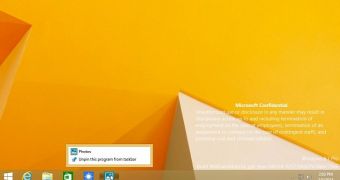Microsoft yesterday released the upcoming Windows 8.1 Update 1 to the web, allowing users to download it freely from its servers even though the launch is only expected to take place next month.
While the company moved very fast to disable a registry hack that allowed users to get the pack via Windows Update, Redmond needed a bit more time to decide to take down the download links, so users are no longer allowed to deploy Windows 8.1 Update 1 until the big launch in April.
Of course, this is not at all a problem for the majority of users, as the MSU installers rolled out by Microsoft yesterday can now be found all over the web, so a simple search on file-sharing websites should come in handy when trying to install Windows 8.1 Update 1.
Surprisingly, Microsoft published the download links for basically all versions of Windows 8.1 Update 1, including 32-bit, 64-bit and ARM, so this is very unlikely to be just a mistake of someone working for the company. Instead, Microsoft was most likely trying to test the waters and give users a chance to install its OS update and maybe collect more feedback before the release in early April.
According to some people close to Microsoft’s development plans, Windows 8.1 Update 1 is expected to reach MSDN on April 1 or 2, as the company is planning to make the pack available for developers just before the debut of the BUILD 2014 conference on April 2.
Consumers, on the other hand, are expected to receive it on April 8, at the same time with other Patch Tuesday fixes that will address vulnerabilities in Microsoft software.
Windows 8.1 Update 1 is Microsoft’s first major attempt after the Windows 8 launch to address the shortcomings of the modern operating system on the desktop.
Previous leaks and the new builds that reached the web yesterday confirm that Microsoft is implementing options to pin Metro apps to the taskbar and launch them without the need for accessing the Start screen, which means that Redmond is indeed working to merge the two environments.
The Start screen is also getting significant improvements in the form of power options available at one-click distance, as well as context menu-like options specifically designed for mouse users. Shortcuts to quickly access OS menus available on the desktop are placed all over the Metro interface, again supposed to make the platform more appropriate for the traditional PC.

 14 DAY TRIAL //
14 DAY TRIAL //